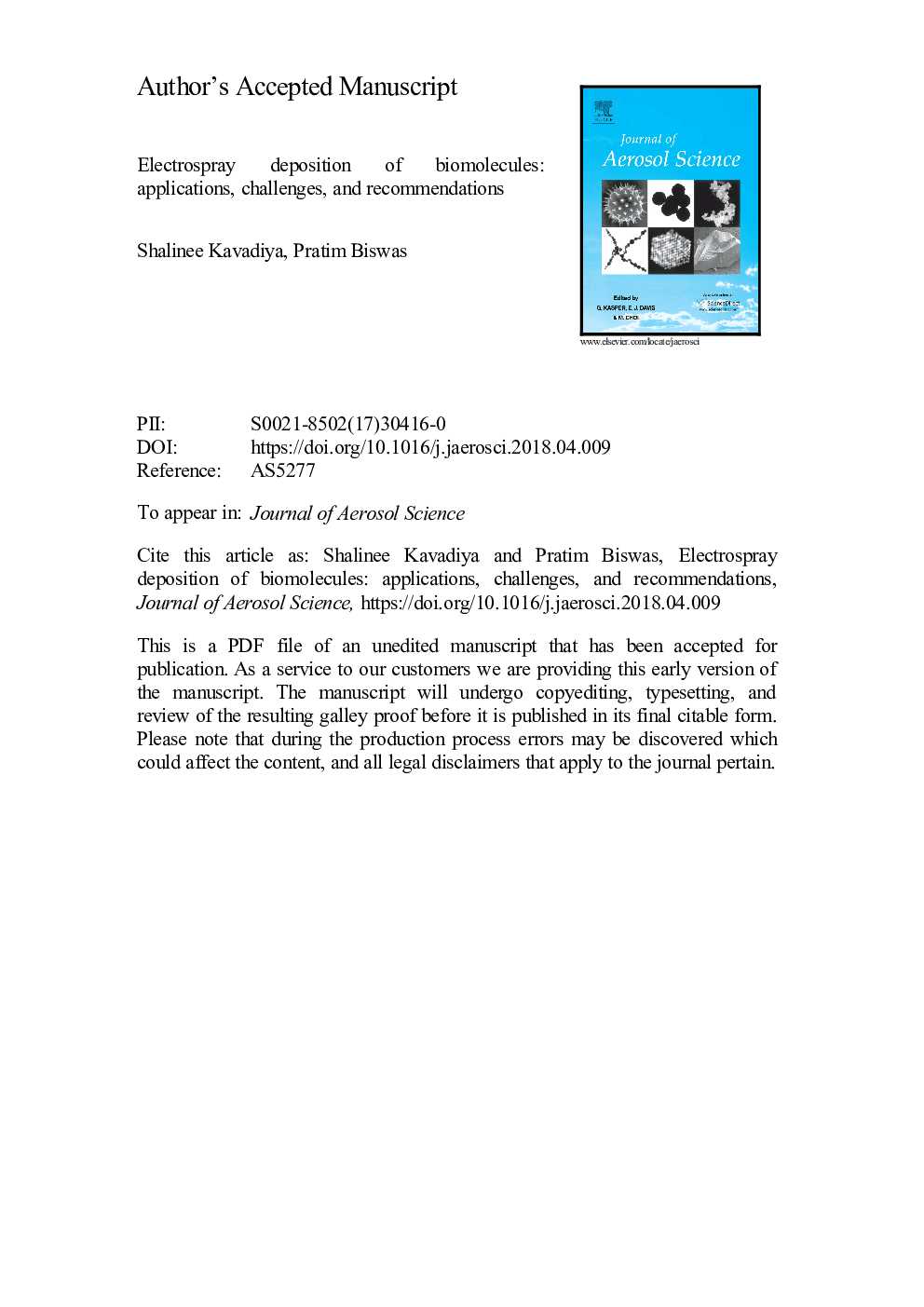| Article ID | Journal | Published Year | Pages | File Type |
|---|---|---|---|---|
| 10223615 | Journal of Aerosol Science | 2018 | 62 Pages |
Abstract
Although electrospray systems are widely used as an ionization technique in conjunction with mass spectrometry to identify unknown biomolecules and determine the composition of a known sample, it also has potential for use in other applications such as self-assembly and deposition of biomolecules to a substrate. This paper reviews the electrohydrodynamic atomization (i.e. electrospray) of a variety of biomolecules, such as light harvesting complexes in photosynthetic organisms, proteins, and DNA. Such biomolecules are important for a variety of applications, such as molecular self-assembly to mimic natural systems, sunlight harvesting and conversion, development of advanced drugs and delivery systems, and film and microarray fabrication. Compared to other particle generation techniques, the electrospray generates particles with a narrow size distribution and with controllable sizes ranging from tens of nanometers to few hundred micrometers. This review concludes by discussing problems occurring during electrospray that can adversely affect the functional properties of biomolecules, along with techniques to detect alterations in their properties and recommendations to prevent such changes.
Related Topics
Physical Sciences and Engineering
Earth and Planetary Sciences
Atmospheric Science
Authors
Shalinee Kavadiya, Pratim Biswas,
